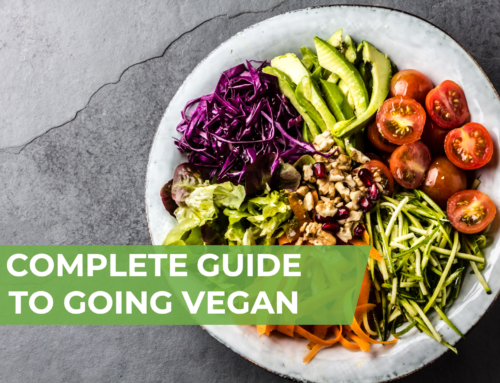How do we know we are eating healthy? Whether we spoon down a pint of Ben & Jerry’s, or eat Oreos for dinner — we always seem justify that we eat healthy. Even if we are overweight, sometimescheat our diets and occasionally overeat — we always seem to rationalize that we eat healthy.
The reality is…most of us are not eating ‘healthy’…
Although we all strive to be healthy eaters, each of us interpret healthy differently. Some think it is healthy to salads and others think eating paleo is healthy. The flexibility in meaning allows us for each of us to form our own version of healthy to make ourselves feel good. The problem is we all end up thinking we eat “healthy” even when we are not. How is that possible?
5 Reasons we trick ourselves into believing we eat healthy…
- Wishful Thinkers– we possess a false belief (“I eat healthy”).
- On a Diet– we follow a diet or structured meal plan (“I eat healthy because I eat the paleo or vegetarian diet”)
- Bad Social Comparisons — we compare our eating to others who eat worse (“I eat healthy because I eat fast food 2x week and my one friend eats fast food 3x week.”)
- Quality without Portion Control– we eat quality foods without concern for the amount eaten (“I eat unlimited vegetables and fruits”)
- Superfoods– we eat isolated “superfoods” and think everything else is irrelevant. (“I eat healthy because I eat kale, quinoa, and magical goji berries”)
Do these 4 things to eat healthier…
Eating healthier is a combination of 1) eating less, and 2) improving the quality of choices (see figure below). Before we eat less and improve choices, there are two things we can do to focus our efforts correctly:
1. EATING IS A “ME” SPORT (NOT WE).
Eating healthier is about improving the food choices you make. That does not require cross-checking what we eat with the Kardasian’s or the latest diet trends. We should only care about continually improving our choices.

2. EATING AS A CONTINUUM (NOT GOOD/BAD).
There are no universal healthy or “good” foods, or perfect portions. Think of healthy as a continuum of choices (type and amount) that we try to better every time.

3. START EATING LESS
Eating less (right portions) is the holy grail to eating healthier. Unfortunately, most wrongly focus on the type of the foods choices (should I choose Balsamic or Ranch dressing for my salad) rather than quantity of food choices (2 vs 4 tbsp.). For example, if I choose balsamic dressing over Ranch but eat 3x the amount than if we were to choose the Ranch dressing is that still healthy? No. The quantity of food we eat is usually 1) completely absent or at best secondary to trying to choose a “healthy food”. How much we eat is largely dictated by packages sizes, restaurants portions and our plates sizes. In short, focusing on choosing healthier foods at the expense of eating more is the first shortcut to healthier eating. 85% of your food focus should be on directing attention to portions you eat and developing strategies to reduce them.
Return on Nutrients (RON): If we get the right poritons, we can focus on optimizing our Return On Nutrients. Similar to Return on Investment (ROI) in business, our goal is to be efficient with our foods we put into our mouth. Simply put, its about refining our food choices to maximize nutritional value. The challenge is to find a balance between eating high yield nutrition foods that don’t hamper our lifestyle.
2. NEXT IMPROVE THE CHOICES
The other 10% of healthier eating is improving the quality of our food choices. You may be wondering — what are quality foods? Well herein lies the problem — there are no such things as “healthy foods”. There are only — healthier foods (foods that are better than what you are currently eating). Trying to determine the quality of food will likely lead us to making unhealthy choices because marketers spend a great deal of time getting us to think foods are healthy. For example, are kale chips a healthy choice? What about protein-brownies? Some may say healthy, others not. The point is — healthy is highly subjective and confusing.
To improve food choices, focus on eating less processed foods.A simple example is apple pop tarts, apple jacks cereal, apple sauce, to apples. If you need to have cereal it would maybe look something like this — Apple jacks, Cheerios with cinnamon and apples, to Oatmeal with cinnamon & apples. All foods require some sort of processing so choosing less processed foods removes the guesswork and is a more objective measure of quality.
The level of processing of foods can be identified through:
- Packaging: cans > frozen > fresh
- Expiration dates: long shelf life > less shelf life
- Shelf stability: shelf stable > refrigeration required
- Quantity of ingredients: more > less
- Preparation: Fried > Grilled > Steamed > Raw
Key Summary
- Most people think they eat healthy, but should be focusing on eating healthier.
- Eating healthier is a process, accomplished by continually improving our choices over time.
- Eating healthier is achieved by a combination (1) eating less quantities (the right portions), and (2) eating less processed foods (better quality).



